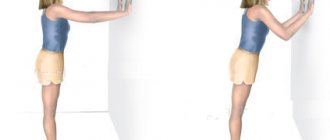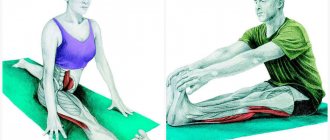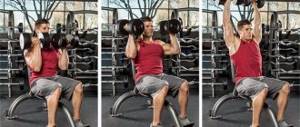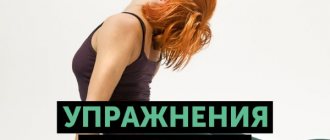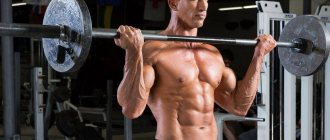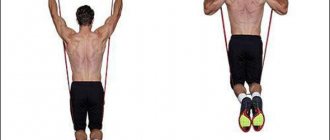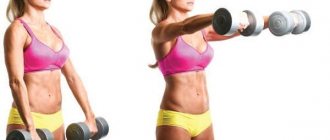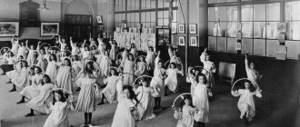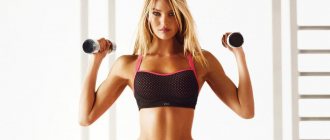Stretching (stretching - pulling, stretching, lengthening, stretching; tension; elasticity, extensibility) - is very useful for the harmonious development of the body, it should not be neglected during training, and even at home. Stretching helps you get rid of stiff, wooden muscles and expand your so-called “functional range of motion” as a breaker. Stretching makes your joints more mobile, and your entire body becomes more flexible and mobile. In breakdancing, without this, you can only be an ordinary dancer, nothing particularly special, without a special style and emotionality of the dance.
Benefits of Stretching
- Reduced muscle tension
- Expanding range of motion in joints
- helps avoid injury
- increases muscle strength
- Improved coordination of movements
- Acceleration of blood circulation in various parts of the body
- Improving the body's energy production processes
- Increasing muscle fatigue threshold and increasing endurance
- Increased efficiency in daily activities, as well as in sports and other physical activities
- Posture correction
- Mental relaxation
- Finally pleasure, a feeling of lightness throughout the body.
Immediate Effects of Static Stretching
- Reduces the viscoelastic properties of muscles and tendons only in the short term (without long-term changes).
- Reduces the excitability of motor neurons due to the inhibitory effect of the Golgi tendon organ and due to the activation of Renshaw cells.
- Reduces motor unit activity.
- Reduces the activity of muscle spindles, which in turn leads to a decrease in the activity of the stretch reflex.
- Reduces the sensitivity of nociceptors and joint receptors, which are the main mechanisms for protecting structures involved in movement.
- Facilitates the work of type III and IV articular receptors, and thus suppresses the activity of the alpha motor neuron pool.
Collectively, all of these muscle changes result in decreased force generation, decreased performance, and an increased risk of injury.
Types of stretching (stretching)
Try to understand for yourself the differences in the types of stretching, then you can use them with great effect and understanding (explanation taken from https://katerinabuida.com/7-vidov-stretchinga-rasty...).
Static Stretching
Static stretching is the most common and recommended. Take the position and hold it for 30 to 60 seconds. Frozen in a pose, you should focus all your attention on the sensations in the muscles. You should feel a gentle pulling sensation, but not pain. The main load is directed to the muscles. Gentle on tendons and joints. Stretching with your own weight, bending forward. The folds are in a vertical position, where the most important thing is to relax and “hang” with the entire weight of your top. The splits, if you are not already sitting in them, also involve relaxation, but only in the groin, and not in the knees.
Passive Stretching
Passive stretching is similar in principle to static stretching. The only difference is that with passive stretching, you don't use your own force, but instead have a partner help you.
Dynamic Stretching
dynamic stretching consists of controlled movements of the legs and arms that gently spring you through the range of your muscles' capabilities. This can be either slow (movement with emphasis) or fast movement. These can be all kinds of swings, rolls from split to split. An example of a dynamic movement is to place the palm as a target and swing into the palm, thus not going into a ballistic movement. Or make a free swing, but do not throw, but lead your leg. But this, of course, is more difficult than the palm option.
Ballistic Stretching
(Ballistics is the science of the movement of bodies thrown in space.) This is uncontrolled movement, as opposed to dynamic stretching. An example of a ballistic stretch is a springy movement with good amplitude downward several times to touch the toes in the crease. You need to be careful when using this type of stretching in the beginning. It is useful for experienced athletes and dancers.
Active Isolated Stretching
This is a stretching technique that localizes, isolates, and stretches each individual muscle. This stretching technique can be used to warm up muscles well both before and after training. It can reduce stress on joints, increase range of motion, stretch muscles, and eliminate “stiffness” that limits the range of motion of joints and muscles. It is effective to use a clothesline, belt, rope jump rope, long belt or elastic bandage for this purpose. Using this rope, you can use your own efforts to pull the part of the body that you are stretching. Active stretching is when you assume a position and then maintain the pose without any assistance, solely using the strength of your muscles. For example, raise your leg high and then hold it in this position. The tension of some muscles during active stretching helps to relax the stretched muscles (antagonists) by mutual balancing. Active stretching increases active flexibility and strengthens muscle strength.
Isometric Stretching
This is an alternation of tension and relaxation. Let's look at the example of twine. Sit in the correct position on the splits, then lower yourself until it hurts slightly and strain your leg muscles as if you want to lift yourself up using only your legs (maximum tension), hold for 20 seconds, then relax the muscles and sit lower. And so on several times.
Proprioceptive Neuromuscular Facilitation.
This involves contracting the muscle as much as possible (with the help of a partner or trainer) and then immediately performing a static stretch of the muscle. This technique is best used in conjunction with an assistant. It is important to remember that the muscle being stretched must be relaxed and rested for at least 20 seconds before performing the next exercise. There are two types of proprioceptive muscle relief stretches:
- “contraction-relaxation” (isometric muscle contraction followed by relaxation and then stretching to the maximum point) and
- “contraction - relaxation - agonist contraction” (isometric muscle contraction followed by relaxation, stretching to the maximum point and contraction of the agonist muscle, followed by stretching to the maximum). You get into a static stretched position, then contract the muscle isometrically (that is, without movement), then perform the next stretch, with a greater amplitude, thanks to the previous isometric muscle contraction and subsequent relaxation. Subsequent stretching occurs due to the fact that isometric contraction activates the Golgi apparatus, the muscle relaxes and gains the ability to stretch again.
For example, first you extend your toes and thereby strain the calf muscle, then hold this position for at least 4-10 seconds, tiring the calf due to static tension. And only then do you pull the sock toward you and stretch your calf. The fact is that muscles usually resist stretching: you try to stretch them, but they tend to return to their “shortened” state. But if the muscle is first tired by contracting, it will no longer be able to resist you. And the stretching will be perfect!
Or, if you are planning to stretch your hamstrings, you must first carefully stretch this muscle group, then contract it, overcoming resistance (yours or your partner’s). Next, you need to contract the opposing muscle group (in this case, the quadriceps). For what? According to the physiological law you already know, this will lead to relaxation of the hamstrings, which means that in the next “circle” you will be able to achieve greater stretching of these muscles. Then the cycle repeats again. Experts do not recommend using this technique for those who have had or have heart disease or hypertension.
How long to do the exercises
Static movements are best performed from 15 to 70 seconds. However, it all depends on your flexibility and physical fitness. When the muscles begin to “burn,” wait another 5-10 seconds, and then return to the starting position and relax.
Dynamic movements must be performed in sets. Their number may vary depending on your stamina. It is best to follow the advice of a professional trainer who will select exercises, show the correct technique for performing them, tell you how many times to do each movement and help stretch the muscles and ligaments most effectively.
Important Tips About Stretching
- Always warm up before stretching. We forbid you to stretch cold muscles! Stretching without first warming up increases the risk of injury. Think of your muscles as if they were made of rubber. Heated rubber stretches easily, but cold rubber can tear if you try to stretch it. The best time to stretch is after a warm-up or at the end of a workout. Do not lock your joints in the extreme position; when stretching, keep your legs slightly bent at the knees and your arms at the elbows, this will avoid unnecessary tension in them.
- Never hold your breath while exercising. Try to breathe normally, through your mouth or nose, whichever is more comfortable for you. This will help make the stretching process relaxing.
- Do not rush. Long, shallow stretches reduce unwanted muscle stiffness and tension.
- Don't compare yourself to others. Each person has their own degree of flexibility. By requiring yourself to stretch like a gymnast, you risk overexerting yourself and getting injured.
- Watch the intensity when exercising, avoid strong and sudden movements. Strong impacts do not allow your muscles to relax and adapt to the new position. On the contrary, the muscles begin to contract, and the pain increases many times over. Don't stretch until you feel pain. If you feel pain, you must stop immediately.
(https://wikipower.ru/index.php5/Everything_about_stretching)
Full body stretching exercises
By adding these five stretches to the end of your workout, you'll instantly feel more relaxed, mobile, and flexible. Just make sure your muscles are warmed up before passive stretching. A short, dynamic warm-up will suffice.
Each stretch should be held for 30-45 seconds once or twice. Do not stretch until it hurts or perform springy movements. Perform this set of stretching exercises 2-3 times a week. And don't forget to breathe!
Lunges with quadriceps stretch
If you exercise a lot, or sit for long periods of time during the day, then you are almost guaranteed to have tight thigh muscles. This two-in-one stretch will help target both your hip flexors and quadriceps.
Take the starting position: the front leg is bent at a right angle, and the second leg is extended back. Tighten your core and glutes, then slowly lean back and, using your hand to grab your ankle, pull your leg toward your hip as far as you can. In the final position, for the best effect, try to relax. Don't forget to work both sides.
Pigeon stretch
Coming from yoga, this stretch is great for targeting the glutes. It will be a great help no matter your current flexibility level or training goals.
Place one knee in front of you, leaving the other leg extended behind you. Place both hands on the floor in front of you and slowly lower your body as far as you can, keeping your hips and shoulders straight. Here your goal is to lower yourself to your elbows. If you are not yet flexible enough, stay on your palms.
Bridge on the platform
While most people are familiar with the bridge (called wheel pose in yoga) with the hands and feet on the floor, this variation with the feet elevated really allows for greater impact on the shoulders and upper back while specifically stretching the chest. Since most of us have fairly locked shoulder joints, elevated leg bridges are an amazing way to loosen and stretch the upper body without putting undue stress on the lower back.
Lie on your back with your feet on a step platform, plyo box, or other firm, elevated surface. The higher it is, the more the shoulders will stretch, but at the same time, it will be more difficult to get into the bridge. Place your hands on the floor, placing them wider than your shoulders, with your toes pointing towards your feet. Stand on your hands, lifting your hips and squeezing your glutes. Maintain even breathing, smoothly stretching the shoulder joint while keeping your gaze on your fingers.
Jackknife exercise
If you do a lot of plyometric exercises or intense leg workouts, give your hamstrings some TLC. These two variations of the classic "jackknife" will get the job done.
Sit down with your legs extended in front of you. Tighten your quadriceps, pull your stomach in, and lean forward as far as you can. Try gripping the soles of your feet for a deeper stretch.
For more advanced stretches, you can use a wall to take your hip stretch to a whole new level. But first, a warning: if you have a tight hamstring (like most people), it will hurt at first. But it's worth it!
Stand facing a wall with your feet together. Then lean forward, crossing your arms above your head, and rest your upper back against the wall. Slowly slide down the wall while keeping your legs straight. The closer you are to the wall, the deeper the stretch.
Exercise Iron Cross for chest and back stretching
Most people do a lot of back and forth movements in their workouts, but not a lot of twisting. This amazingly effective stretch helps open up your back and chest at the same time while twisting your core. Avoid this movement if you have a history of spinal disc or lower back injuries.
Lie on your stomach with one arm extended to the side. Turn away from this arm in the other direction, but do not damage the shoulder joint. Bend the leg that is on top, lowering your foot to the floor. The more you twist, the better your pectoral and back muscles will open. Breathe evenly while holding the pose. Don't forget the other side.
When should you stretch, before or after a workout?
I realized for myself that I need to stretch both before and after training. A good warm-up is necessary before strength exercises. When I haven’t done it, already during training I start to get sick somewhere, or get injured somewhere. That's why I combine warm-up with stretching. But you shouldn’t overdo it with stretching before training. Otherwise, all your strength will go into stretching.
This is due to certain structures - proprioceptors. They were found in muscles and ligaments. These are special Golgi bodies in tendons and muscle spindles. Many experts recommend static rather than ballistic stretching as a more effective stretch. Static stretching activates the Golgi corpuscles, which helps relax the stretched muscle. This stretching is best done after strength training. Activation of the Golgi apparatus during stretching relieves muscle tension, which is good for the development of flexibility, but interferes with the production of maximum muscle force. To do this, the muscles and ligaments must be tight.
In practice, I find more success and like active and dynamic - before strength training, static and dynamic - after training. Practicing fries in training is more of an isometric stretch - but combining strength training and stretching into one does not work well to develop the quality of movements. It is better to stretch separately, and in dance work on strength in your active range. In addition, the movements in dance are sharp and the muscles remain in stretched states for a short time - there is no talk of effective stretching here.
Clamped and tense muscles are very visible in dance - you can ask someone in training to watch how you move and tell them how it looks. Or film yourself and then look critically at your movements.
Distinctive features of dynamic muscle stretching
Muscles and joints are fully involved during dynamic stretching. They are in constant motion and tension, using all the capabilities of the body. This speeds up the pulse and warms up the muscles.
For a number of reasons, dynamic stretching is recommended as a final warm-up before exercise. While it is recommended to complete the training itself with static stretching exercises. Dynamics can also be performed as a full-fledged workout with a previous warm-up, because many dynamic exercises also carry a force load on the body and muscles, strengthening them.
Warm up before stretching → Stretching after strength training →
Benefits of Dynamic Stretching:
- Increased flexibility. Elimination of joint restrictions during movement exercises.
- Elimination of stiffness and tightness of muscles. Active movements quickly warm them up, warm them up and prepare them for further stress.
- For athletes, they increase speed (running), height (jumping), due to the development and strengthening of muscles, and overall mobility.
- When performing dynamic stretching exercises combined with strength training, productivity is many times higher than when combined with static exercises.
- Reduces the likelihood of household and sports injuries.
